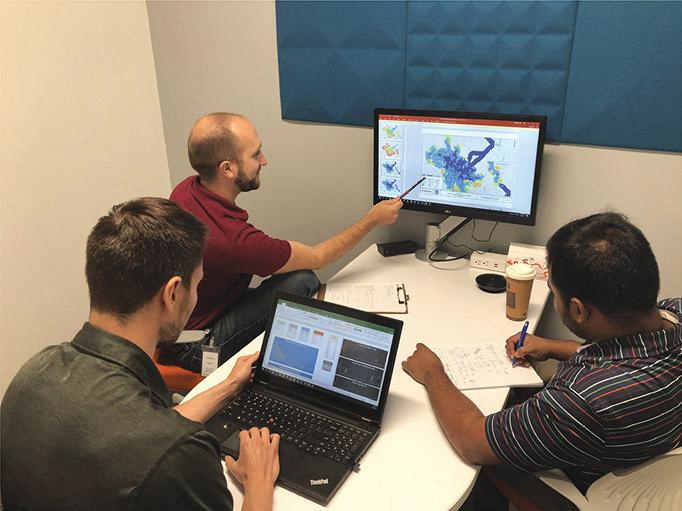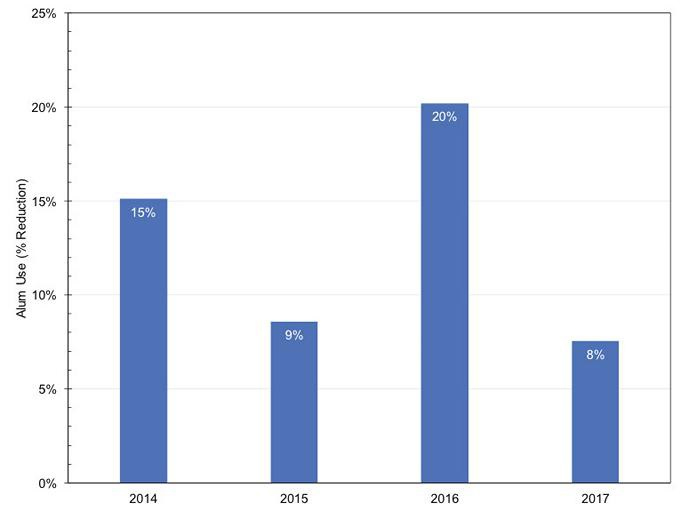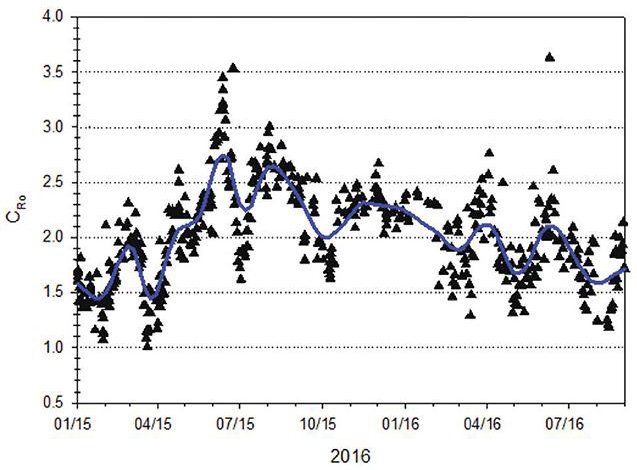Akron's Path Toward An Intelligent Water Network Reduces Chemical Dosing While Improving Water Quality
By James P. Cooper
When water demand declines, water quality and utility budgets can suffer. When the situation arose in Akron, OH, a smart solution emerged.
Water systems throughout the country are considering and implementing digital transformations as one method to solve common challenges such as aging infrastructure, financial constraints, increasing regulatory pressure, and a workforce replaced with new skillsets much different than in the past. Traditional water distribution systems are characterized by practices such as system monitoring to meet compliance requirements, reactive maintenance procedures, and modeling focused on long-term planning. As leaders at water systems gain an understanding of the importance of innovation and see quantifiable benefits from other utilities, they are beginning the process of transforming their utilities into intelligent water networks. Intelligent water networks are characterized by practices such as widespread use of sensors, real-time data analysis, proactive anomaly response, and modeling to support near-term operational decisions.
Intelligent water networks are characterized by practices such as widespread use of sensors, real-time data analysis, proactive anomaly response, and modeling to support near-term operational decisions.
A common denominator in the implementation of intelligent water networks is the fresh insight gained through advanced data analytics. Adoption of data mining practices and machine learning techniques and a general shift toward artificial intelligence provide the tools to achieve this. The profession of data science provides the workforce knowledgeable in applying these tools. However, there are sensitivities to data-driven operations rather than personal experience that must be overcome. Common challenges, such as data security, management, and communication costs of a vast sensor network, can be addressed through a strategic plan. Often, the greatest challenge in implementing an intelligent water network is the impairing culture of accepting status quo within an organization.
Akron’s Approach To An Improved Water System
The city of Akron, like many utilities in the Midwest, experienced a decline in water demand over the past decade paralleled with an increase in the costs associated with producing and distributing drinking water. When a water system experiences declining demand, it is often found that maintaining adequate water quality can require additional resources. Methods such as flushing areas of higher water age or increasing disinfectant and other water treatment chemicals often result in higher costs to operate the system.

Data collection and analysis via Decision Blue
The city of Akron’s water distribution system consists of 1,225 miles of water main serving approximately 300,000 customers across 11 municipalities throughout Summit County in Ohio. The city recently engaged Arcadis to better understand distribution system water quality through development of a water quality model. The purpose of the model is to simulate changes in system water quality occurring over time, as well as evaluate the impacts of system flushing in select areas of the system, which contribute to the city’s non-revenue water. Due to the dynamic nature of the source water quality, a second-order disinfectant decay model was necessary to represent the water quality experienced throughout the pipe network. Once calibrated, the water quality model predicted chlorine residuals and trihalomethane disinfection byproduct concentrations throughout the distribution system based on a competing-reactant approach to represent the variable nature of the organic content being treated by the city. Throughout the project, it was evident that temporal data from both the water treatment plant and the distribution system was necessary to understand and improve water quality within the distribution system. Model development included advanced statistical analysis and data mining as methods to analyze the data from water source through treatment and the subsequent response within the distribution system due to ongoing water quality reactions.

Alum chemical dose reduction at the City of Akron Water Supply Plant, 2014 – 2017
Often, the greatest challenge in implementing an intelligent water network is the impairing culture of accepting status quo within an organization.
Leaders within the City of Akron have long understood the importance of thinking differently to operate and manage their water utility for long-term success. City and regional initiatives include development of the Akron Global Water Alliance and, more recently, the Bounce Innovation Hub. With an understanding that to maintain adequate water quality, the entire water system from source to tap must be evaluated together, the city and Arcadis engaged FontusBlue — one of the startups in the Bounce Innovation Hub. FontusBlue is an innovative leader in managing simultaneous water quality compliance challenges. FontusBlue implemented Decision Blue® — a decision support framework to improve water quality and reduce chemical treatment costs.

Time-varying competing reactant (CR) used in the second-order distribution system water quality model, 2015 – 2016
Because of this collaboration, the city is now minimizing water quality flushing, and the Water Supply Plant has reduced alum dosage up to 20 percent since 2013. The city is now also delivering the best distribution system disinfection byproduct concentrations measured in the history of the Water Supply Plant.
Akron has a long history of a well-managed system providing quality drinking water to its service area and nearby systems. Partnering with Arcadis and FontusBlue has shown that the road to intelligent water includes opportunities to improve on existing system monitoring and operations.
The Future Of Water
The challenges facing the water sector are not dissolvable with time. Water professionals who understand the value of innovation are the catalysts to identifying new ways to address these challenges, and they are the ones who set a sustainable path forward for their organizations. Any digital transformation starts with a strategic plan. That plan must begin today so that utilities are successfully operating and fully benefiting from their implementation in the years and decades ahead.
Acknowledgements:
Special thanks to the efforts of Ben Chenevey (Arcadis), Chris Miller (FontusBlue), Jeff Bronowski (City of Akron), and many other City staff.
About The Author
 James P. Cooper, PE, ENV SP, CWO, represents Arcadis as the Intelligent Water Networks Practice Leader with 14 years of experience as a certified operator and a professional engineer. He is on the Board of Trustees for the American Water Works Association Engineering Division, is current president of his local Water Environment Federation section, and serves as an advisor for multiple organizations on intelligent water networks. Cooper is lead author of the recently released AWWA M32, Computer Modeling of Water Distribution Systems and has authored numerous publications on utility management, system optimization, and intelligent networks.
James P. Cooper, PE, ENV SP, CWO, represents Arcadis as the Intelligent Water Networks Practice Leader with 14 years of experience as a certified operator and a professional engineer. He is on the Board of Trustees for the American Water Works Association Engineering Division, is current president of his local Water Environment Federation section, and serves as an advisor for multiple organizations on intelligent water networks. Cooper is lead author of the recently released AWWA M32, Computer Modeling of Water Distribution Systems and has authored numerous publications on utility management, system optimization, and intelligent networks.
